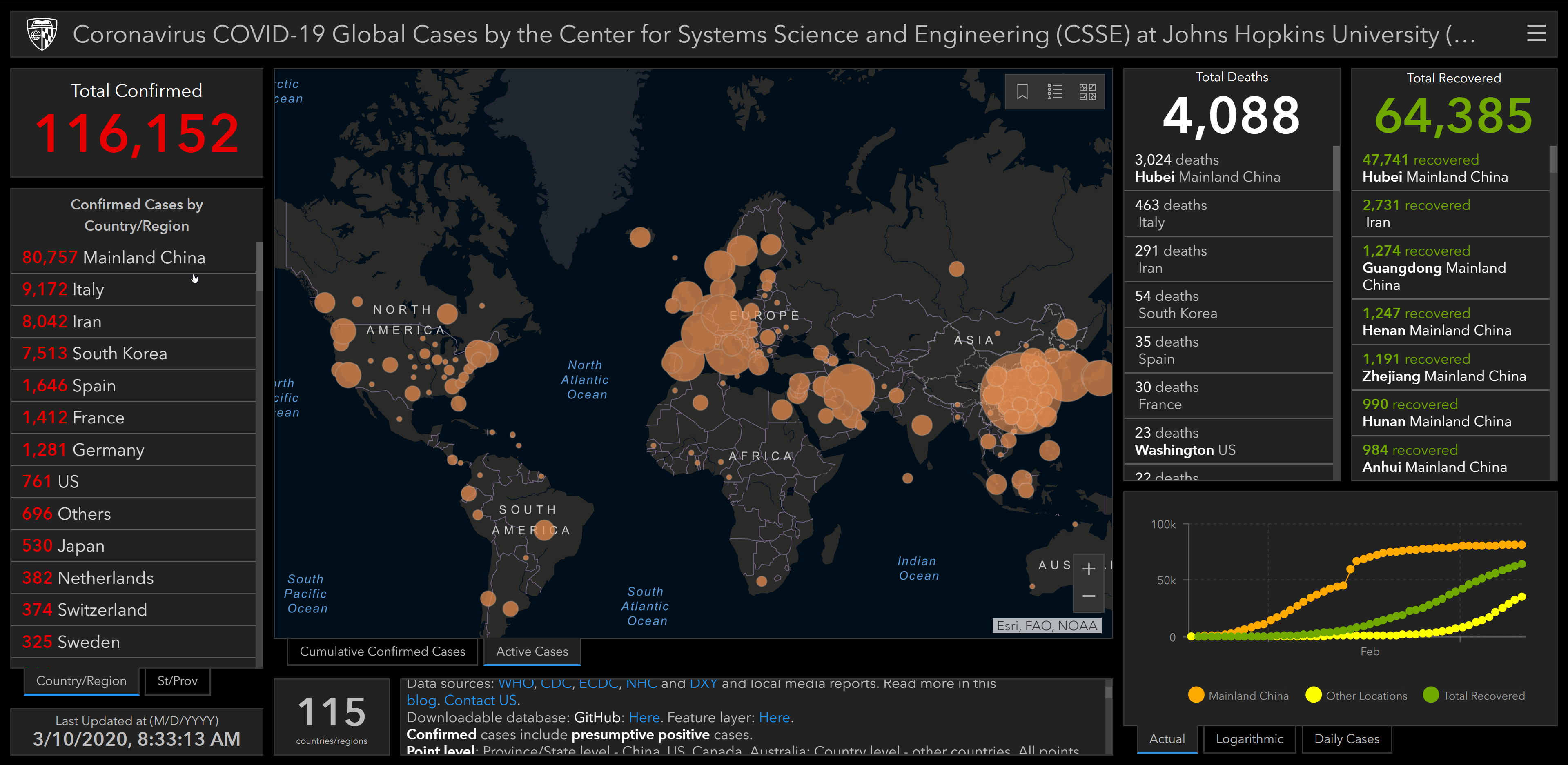The Corona Virus 2019 (COVID-19) is a new type of Coronavirus that has recently started infecting and rapidly spreading among humans starting in late 2019. It is currently believed that the virus originated in Wuhan, China at a wet market. To learn about the geography, spatial distribution, and rapid spread of the virus, study the following resources to answer the questions provided.
UPDATED: June 3, 2020
History of Pandemics
- There are fossils of viruses preserved in the DNA of the hosts that they have infected. Describe how this molecular fossil trail can help scientists understand where viruses came from and how they have evolved.
- List the six diseases that forever changed the world.
- Describe how pandemics spread from person to person and around the world.
Besides watching the video above on the 1918 Pandemic, read the following article from VOX titled, “The most important lesson of the 1918 influenza pandemic: Tell the damn truth.”
- Why was the 1918 Pandemic considered the “mother of all pandemics?”
- Explain how scientists use smart vaccination techniques to end a pandemic that had killed millions around the world.
- Explain how scientists figured out what HIV is, when the infection morphs into AIDS, and where they think the virus originated.
- Describe the science behind how vaccines trigger an immune response and teach our bodies to recognize dangerous pathogens.
Is COVID-19 an Epidemic or Pandemic?
On Wednesday 11, 2020, the World Health Organization (WHO) declared COVID-19 as a pandemic. Read an article by The Guardian titled, “What Is a Pandemic?“
- Contrast the difference between an epidemic and a pandemic and what the response by governments are to each from a geographic or spatial perspective.
- Compare the difference between asymptomatic transmission and community spread.
- Explain the purpose of social distancing.
- Describe how the virus is being transmitted between humans and how we can reduce the spread of the disease.
Read the article from Vox titled, “How Canceled Events and Self-Quarantines Save Lives, In One Chart.”
- Analyze and describe the epidemiology strategy of “flattening the curve.”
- Describe why social distancing is so important to “flatten the curve” to slow the pandemic from becoming a catastrophe.
Origins of COVID-19
- Describe how and where the COVID-19 virus originated and how did it potentially reach humans.
- Explain what makes China’s wet market different from other wet markets around the world.
- Explain China’s “Wildlife Protection Law” and its impact on the wildlife farming industry.
- Describe how the impacts on this industry also impacted China’s wet market in comparison to wet market practices in other regions of the world.
It is important to note that in 2015, the World Health Organization (WHO) identified best practices for naming viruses without referring to the geographic location, animal, or group of people related to the disease. When any type of disease is connected to regions of the world, or a group of people, racist or bigoted stigmas, stereotypes, or tropes can also spread like the disease itself. Viruses like COVID-19 do not target specific groups of people. Even though it is likely that COVID-19 originated from Wuhan, China, the virus has spread rapidly throughout the world and hypothetically could have originated in other regions. Or future pandemics could originate from regions like the United States or Europe. So this current Coronavirus is called COVID-19 because it was “discovered” at the end of 2019. The focus is on the type of virus and the time it was discovered.
“Outbreaks can bring out the best and worst of people. Stigmatizing individuals or entire nations does nothing but harm the COVID-19 response.” – Dr. Tedros Adhanom Ghebreyesus, WHO Chief
Go to the Esri story map, Mapping the Novel Coronavirus Outbreak, and explore the information, data, and dynamic maps provided.
Reflect on the quote by epidemiologist Lauren Gardner, “It is important to know how to distinguish between the advice and information coming from public health authorities and scientists, versus the misinformation that is instigating unnecessary fear.”
- Describe the misinformation you have heard regarding the COVID-19 virus?
- State how many people had left Wuhan, China at the start of the massive quarantine.
Spatial and Historical Distribution of COVID-19

Analyze the spatial and historical distribution of the COVID-19 virus using interactive GIS maps provided by John Hopkins University (above) and the New York Times.
- Identify the spatial distribution of COVID-19 across the world. Which regions of the world have the most significant number of cases of COVID-19?
- Locate the spatial distribution of COVID-19 within the United States. Which regions of the world have the highest number of cases of COVID-19?
- Describe the data trends (graph lines on the lower-right of the website) for mainland China and the rest of the world.
- Provide a summary for each of the following regions: United States, Asia, Europe.
The Spread of Racism Regarding COVID-19
Watch the video above from AJ+ and the articles from Forbes Magazine titled “The Science of Why Coronavirus Exposes Racism and Xenophobia” and “How COVID-19 Coronavirus Is Uncovering Anti-Asian Racism.”
- Describe the connection between COVID-19 and racist rhetoric that is occurring around the world regarding the virus.
- Explain the various kinds of misinformation that exist regarding the virus.
Protecting Society
- Epistemologists and other health experts recommend that we wash our hands often, with soap and warm water, for a minimum of 20 seconds. Explain why soap is so effective against COVID-19.
- Provide specific examples of how you and the people you know can help to fight the COVID-19 pandemic.
Related Resources
The following information provides on-going and up-to-date information regarding COVID-19.

